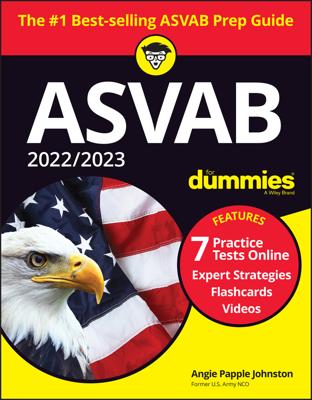When it comes to the electronics test, don’t feel like you have to know as much as Ben Franklin to get a passing score. Just use your common sense. If a question asks, “What’s the safest way to run an extension cord to a reading light?” the answer “across the middle of the floor” is probably going to be wrong.
You can also figure out quite a few answers if you remember these units of measure:
Current: Amperes (or amps)
Voltage: Volts
Resistance: Ohms
Power: Watts
Energy: Watt-hours
Memorizing simple principles
If you commit the following principles to memory, you’ll have an easier time succeeding on the Electronics Information subtest:
Ohm’s law
Power (watts) = Voltage (volts) Current (amperes), or P = EI
Current flows from a negative pole to a positive pole.
A closed circuit must exist for electricity to flow. (Think NASCAR.)
Alternating current (AC) changes direction constantly at a constant rate. The number of times a current completes two alternations of direction per second is known as its frequency; the unit of measurement for frequency is the hertz (Hz).
Electronic devices operate at very high frequencies.
Electronic devices often require a specific capacitive or inductive reactance to work. Capacitors and inductors are devices used in circuits to provide the type of reactance needed.
Devices that change alternating current to direct current are called rectifiers.
A transistor can amplify a signal.
Playing the guessing game
The Electronics Information subtest is the type of test where you either know the answer or you don’t. But if you don’t know the answer, you should still guess (just be cautious about guessing on the CAT-ASVAB; if you have too many wrong answers at the end of the subtest, you may be penalized). Remember, you don’t have a lot of time to ponder the answer choices. Guess and move on. To increase your chances of guessing correctly, you can often eliminate an incorrect answer.
Sometimes one answer is obviously wrong, or one answer is more obviously right than another. The electronics answer is usually the right answer. Therefore, an answer that has to do with how much something costs or how pretty it looks will probably be wrong.
Not all questions are specifically electronics questions. You may be asked, “A mil measures what quantity?” Think about how you’ve seen that prefix used before, such as in the word millimeter. A millimeter, you may remember, is one-thousandth of a meter. So you may be safe in assuming that a mil is one-thousandth of an inch.

